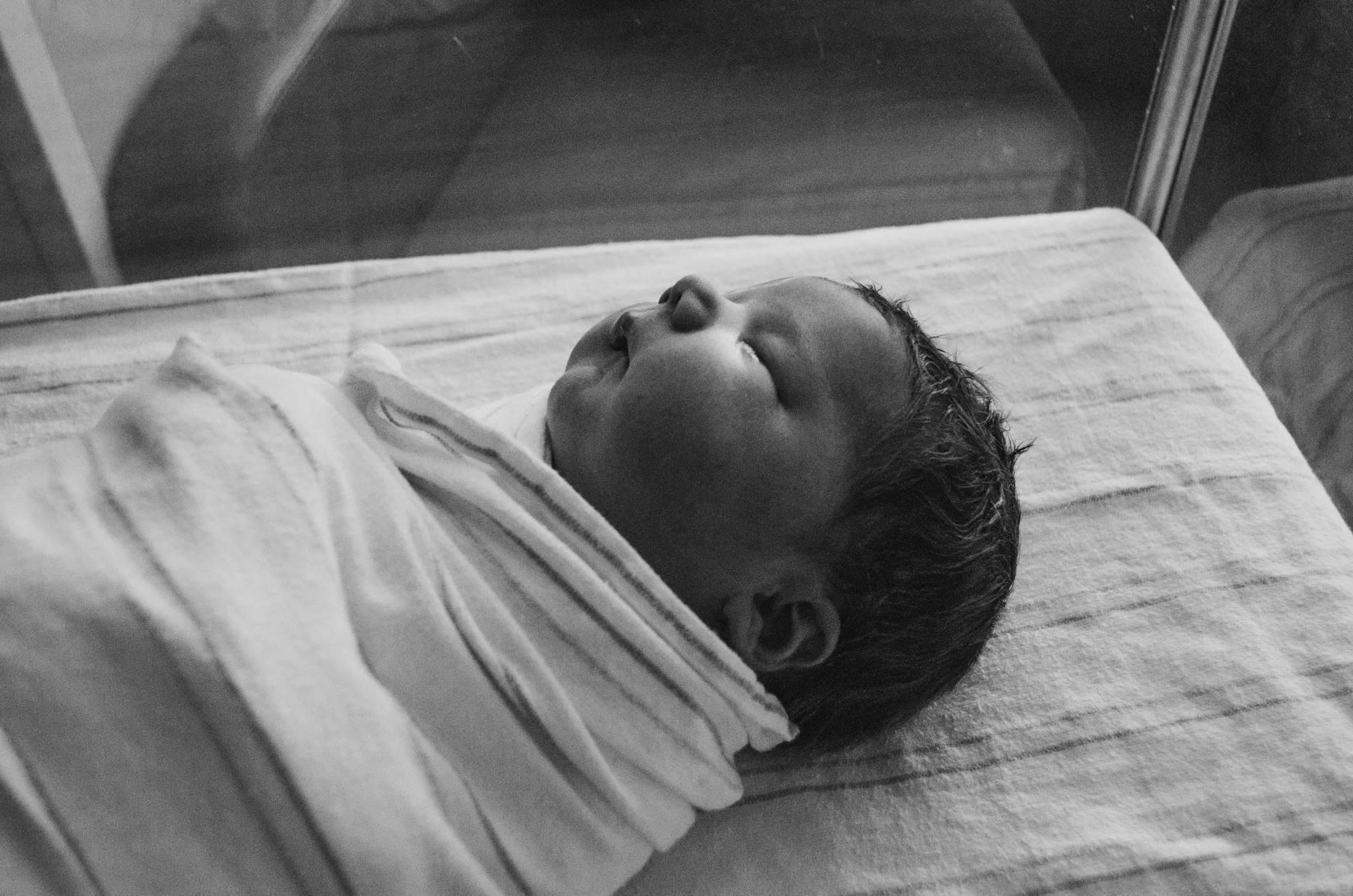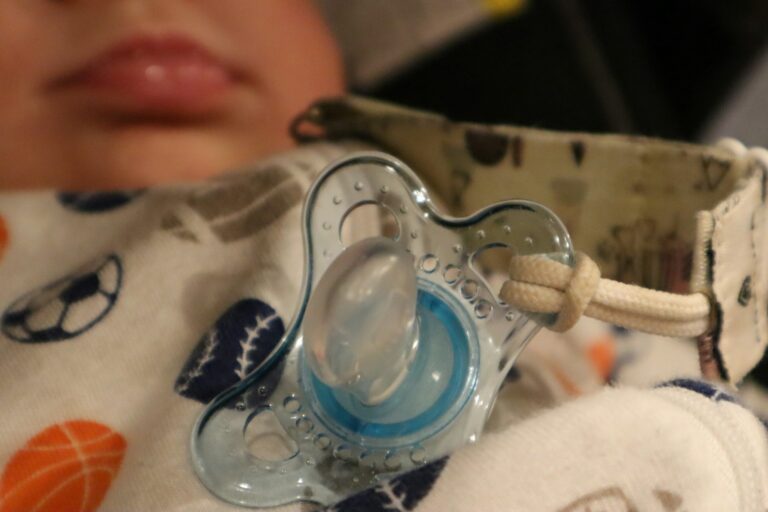Wheezing echoing through the silence of night, sudden fits of coughing that disrupt even the gentlest sleep, tiny chests heaving with effort—such images have a way of haunting the minds of parents confronting the puzzle of infant asthma. Is that persistent cough just another ordinary cold, or is it the early warning of something more daunting? Watching a baby struggle for breath sparks a tidal wave of anxiety. Questions multiply: How is asthma different in infants? Which signs actually matter? What can really make a difference at home—and when should swift medical help be sought? Take a breath, let’s untangle the complexities surrounding infant asthma, peeling back the layers of uncertainty to offer practical tools, scientific insight and gentle reassurance, every step of the way.
Understanding Infant Asthma: Decoding Early Signs, Making Sense of Differences
Infant asthma, or asthma in babies, is not quite the copy-paste version seen in older children or adults. Here, minute airways—already narrow by nature—rapidly swell and constrict, making each breath more laborious. Statistically, about 1 in 10 kids will grapple with asthma-related symptoms before their fifth birthday, with most showing their first telltale signs as infants. Yet, here’s a twist: nearly 60% of little ones see those symptoms fade after age three.
Still, the road isn’t smooth for everyone. Risk factors—being born prematurely, family history of asthma or eczema, exposure to tobacco smoke, underweight birth—can push that risk needle up, making long-lasting infant asthma more probable.
Now, unlike a chatty, older sibling who can say, “I feel tight in my chest,” an infant relies on a different vocabulary altogether. Look for rapid breathing, wheezing (that distinct musical whistle), grunting, cracks in feeding patterns, tummy (abdominal) breathing, retractions between the ribs and, in more severe cases, a bluish tinge on lips or nails called cyanosis. Often, these symptoms crescendo at night or after a simple viral cold.
Standard lung function tests? Off the table for babies. Doctors decode the pattern of symptoms over time, responses to treatments, and delve deep into family history, often excluding impostors like bronchiolitis or congenital airway differences. Underpinning all these challenges is a reality: infants’ smaller airways make even mild inflammation alarming—much like trying to sip a smoothie through a coffee stirrer instead of a regular straw.
Types of Infant Asthma: Diverse Faces of a Common Challenge
Not all forms of asthma act alike, even in the realm of infancy. Think of infant asthma as a spectrum, with each child charting their own course.
- Intermittent Asthma: Short, sharp episodes—often after a cold—then silence. Between attacks, baby breathes just fine.
- Persistent Asthma: Trouble brews in the background—nighttime coughs that don’t quit, congestion, and respiratory unease, even in the calm between storms.
Doctors become detectives, piecing together clues: Is there a history of asthma or allergies in the family? Eczema in the child? Environmental triggers—tobacco smoke hovering in rooms, exposure to pets, unseen dust mites—might all play a mischievous role.
Causes and Risk Factors: Unraveling the Web
Genes and the environment tango incessantly when it comes to infant asthma. Some little ones arrive pre-programmed with a higher risk, thanks to genetics influencing immune system responses and allergy profiles. Dip into the family gene pool—if close relatives fight asthma, eczema, or food allergies, the odds stack higher.
But it’s not all written in DNA. The environment pivots the balance: dust mites, air pollutants, mold patches hiding in damp corners, secondhand smoke curling around the nursery. Even before birth, factors like maternal smoking, poor nutrition, or low vitamin D levels can plant the seeds.
Respiratory viruses—including RSV (Respiratory Syncytial Virus) and rhinovirus—don’t just cause wheezing; repeated, severe infections lay down tracks for later asthma in genetically predisposed infants. Preterm or underweight babies? Their developing lungs and fragile airways make them easier targets for chronic inflammation and injury.
Recognising Symptoms: Early Signals Parents Should Never Ignore
The world of infant asthma is filled with subtle clues that speak, even when babies can’t. Some cues jump out:
- Breathing distress: Watch for rapid or irregular respiration, nostrils flaring with each inhale, obvious muscular effort just to breathe, pulled-in skin around ribs.
- Wheezing: That whistling or squeaky sound as air struggles through tightened airways—classic, yet sometimes absent.
- Persistent dry cough: Especially at night, during play, or lingering long after a viral cold.
- Feeding struggles: Fatigue during bottle or breast, loss of interest in feeding, difficulty sucking.
- Cyanosis: Blue lips or fingertips herald low oxygen—a sign to act fast.
- Altered behaviour: Fussiness, night-time awakenings, a reluctance for play.
These are not just “baby things”; prompt evaluation matters, particularly if breathing seems labored or there’s a hint of blue on lips or face. Other signals—a recurring cough at night, cough triggered by emotional excitement, unexplained wheezing—also tip the scale toward talking with a paediatrician.
Diagnostic Challenges: Piecing Together the Asthma Puzzle in Babies
Diagnosing infant asthma reads almost like an art—seasoned clinical judgement rules, since standard tests can’t paint the whole picture. Doctors lean on:
- Repeated respiratory symptoms: Are they episodic? Worse at night? Triggered by colds or allergens?
- Medication trial: A course of inhaled bronchodilators or corticosteroids—if symptoms improve, asthma gains more ground on the diagnostic list.
- Family backdrop: Parental or sibling histories of asthma and allergies make diagnosis more likely.
- Rule-out efforts: Especially differentiating from bronchiolitis (commonly linked to RSV), reflux or rare congenital airway conditions.
- Allergy skin prick tests: Small scratches on the skin, tiny bits of allergen—read in minutes, giving helpful clues.
- Imaging and lab checks: Chest X-rays to exclude infections or anatomical anomalies, blood tests sometimes showing raised eosinophils (cells often high in allergic diseases).
If repeated attacks or unclear responses to therapy emerge, paediatric pulmonologists or allergy specialists may be roped in.
Treatment: Helping Your Infant Find Easy Breaths Again
At the heart of asthma care lies a clear aim: ensure effective breathing, prevent attacks, encourage growth and development. How is this achieved?
- Asthma action plan: Customized, written and practical. It details how to monitor for warning signs, what to do in emergencies, how to administer medicines, and when to contact help. Every caregiver—parents, babysitters—knows the plan.
- Medications, tailored for infants:
- Short-acting beta-agonists (SABAs): Like salbutamol (albuterol), given by inhaler and spacer with mask, or via a nebuliser, for rapid relief.
- Inhaled corticosteroids (ICS): Examples include budesonide and fluticasone, essential for everyday prevention, not just “quick fixes.” Devices matter—correct use is everything (ask nurses or doctors for a demonstration).
- Leukotriene receptor antagonists (LTRAs): Such as montelukast, used in select cases.
Good inhalation technique is vital for these medicines to reach tiny lungs—regular practice and professional check-ups are worthwhile. During an attack, prompt use of rescue medicine, careful monitoring, and sometimes hospital attention are needed if symptoms persist.
- Avoidance of triggers: Not a mere afterthought—reducing smoke, dust and other allergens has a direct impact on flare-ups and comfort.
- Environmental tweaking: Wash blankets and soft toys in hot water each week, use HEPA vacuums, invest in allergy-proof mattress covers, and keep the surroundings smoke-free. Clean air isn’t just a slogan.
- Nutritional support and regular check-ups: Growth, healthy weight gain, and monitoring for medicine side effects—these matter too.
Preventing Asthma Attacks: Guarding the Everyday Environment
A few targeted changes can transform everyday living for families tackling infant asthma:
- Ban smoking at home or in the car—yes, even traces clinging to clothes (thirdhand smoke) are harmful.
- Battle allergens: Launder bedsheets and cuddly toys in hot water weekly, avoid carpets if possible, embrace high-efficiency air cleaners.
- Ensure good ventilation, particularly in humid climates. Guard against mold—hidden spores may quietly trigger attacks. Clean air purifiers help.
- Daycare awareness: Share your child’s triggers and asthma plan with caregivers; insist on smoke-free, well-cleaned spaces.
- Support breastfeeding: Apart from all its other strengths, breastmilk bolsters immunity, reducing respiratory infection risks for babies.
And if anyone in your environment is a smoker, quitting is genuinely the most effective action to reduce a child’s asthma risk.
Living With Infant Asthma: Navigating Routines and Building Support
The relentless nature of infant asthma can rattle even the most composed routines—medication schedules, midnight checks, shared instructions for everyone who cares for your child.
- Stick to routines: Regular medication, daily tracking, anticipating and minimising triggers.
- Caregiver coordination: Everyone—grandparents, daycare, babysitters—should know the ropes: how to spot trouble, how to use inhalers and spacers, what steps to take if symptoms escalate.
- Action plan updates: Treatment evolves as your child grows. Keep emergency numbers and up-to-date instructions visible.
- Siblings and family: It’s common for brothers and sisters to worry or feel overlooked—involve them if possible, answer their questions, and maintain a sense of normalcy.
Physical activity? Far from banned! When well-controlled, most children with asthma can delight in play, crawl, toddle or even be boisterously active—ask your doctor for personalised guidance.
Emergency readiness is not about alarmism, but about confidence: know the signs—bluish lips, struggling to breathe, lethargy, trouble feeding—and have a clear, practiced response prepared.
Long-term Outlook: What Can Parents Realistically Expect?
The future for most with infant asthma is bright, especially when management remains steady. A majority “outgrow” symptoms—especially those who only wheeze with viral colds—but those with persistent signs, allergies, or strong family history may see asthma continue into later childhood.
Undetected or poorly controlled infant asthma can sometimes hamper lung development, but this is the exception with committed monitoring and up-to-date care. When growth, activity and sleep are tracked routinely and medication is kept in check as your child thrives, most infants outpace the condition and reach their milestones without delay.
The Importance of Allergy Investigation
Why probe for allergies? Because knowing what sets off infant asthma in a specific child—be it dust mites, pet dander, or pollen—lets you sidestep the avoidable. Skin prick tests are the mainstay here; a short, controlled scratch, a quick response, and families gain insight into actionable triggers. Addressing these not only reduces symptom severity but prevents future emergencies.
Latest Research and Advances in Infant Asthma
Science keeps stretching possibilities. Subtyping infant asthma (allergic, viral-induced…) is unlocking more personalised care. Blood work, like eosinophil counts and expanded allergy panels, are fine-tuning predictions about who will gain most from preventative corticosteroids.
New devices—improved spacers, gentle masks—streamline drug delivery for wriggling infants. Some studies are even exploring intermittent steroid approaches or early antibiotics (such as azithromycin) for specific patterns, though these approaches remain experimental.
Greater clarity about viruses, gene influences, immune tweaks, and even the infant microbiome is paving the way for novel therapies and smarter prevention. The best care remains attentive, evidence-based, and always open to scientific progress.
Key Takeaways
- Infant asthma can manifest differently than in older children, requiring attentive symptom tracking and clear family communication.
- Most infants will see symptoms resolve by age three, but some risk factors—family history, low birth weight, allergy history—raise the likelihood of persistence.
- Early recognition of symptoms, proactive avoidance of triggers, and meticulous follow-up nurture healthy development.
- Diagnosis leans heavily on repeated symptom patterns and the artful eye of experienced clinicians, with medication trials and allergy testing guiding decisions.
- Treatments focus on inhaled corticosteroids for prevention, quick-relief inhalers for acute symptoms, and an actionable, shared asthma action plan.
- Allergy investigation, environmental management, and everyday routines work hand-in-hand to reduce risks and ensure comfort.
- With consistent management, most children with infant asthma participate fully in family life, reach developmental milestones, and confidently face new stages.
- There are dedicated resources and professionals equipped to support you. For extra reassurance, advice tailored to your child’s needs, and free health questionnaires, download the Heloa app—your digital ally in journeying through early childhood care.
Questions Parents Ask
Can teething make asthma symptoms worse in infants?
Sometimes, teething and worsening asthma symptoms overlap, leading many parents to worry. Teething itself doesn’t directly provoke infant asthma, but the phase can coincide with minor viral infections and increased drooling, both possibly intensifying the underlying symptoms. If asthma control seems shaky during teething, more often the real reason is a mild illness at the same time. That said, monitor your child’s breathing patterns closely, and if a new or persistent change appears, do not hesitate to consult your paediatrician.
Is infant asthma different from asthma in older children?
Absolutely. In little ones, signs can masquerade as other problems—babies don’t describe chest tightness, and their airways are so small that mild inflammation can look dramatic. As children grow, symptoms may evolve, become more like the classic asthma picture seen in older ages, or even disappear. Medical follow-up and regular communication with providers ensure care adapts at every step.
How can parents help an infant with asthma sleep better?
Night-time can easily become a battleground if infant asthma disrupts sleep. To promote restful nights, slightly lift the head end of the baby’s mattress (always avoiding pillows or loose bedding), keep the room calm, ensure the environment is free from allergens, and strictly follow the asthma action plan. A well-cleaned humidifier may help, but too much humidity risks encouraging mold. Above all, if night-time breathing appears strained, lips change colour, or the baby struggles to settle, seek immediate medical advice to avoid complications.
Further reading:









